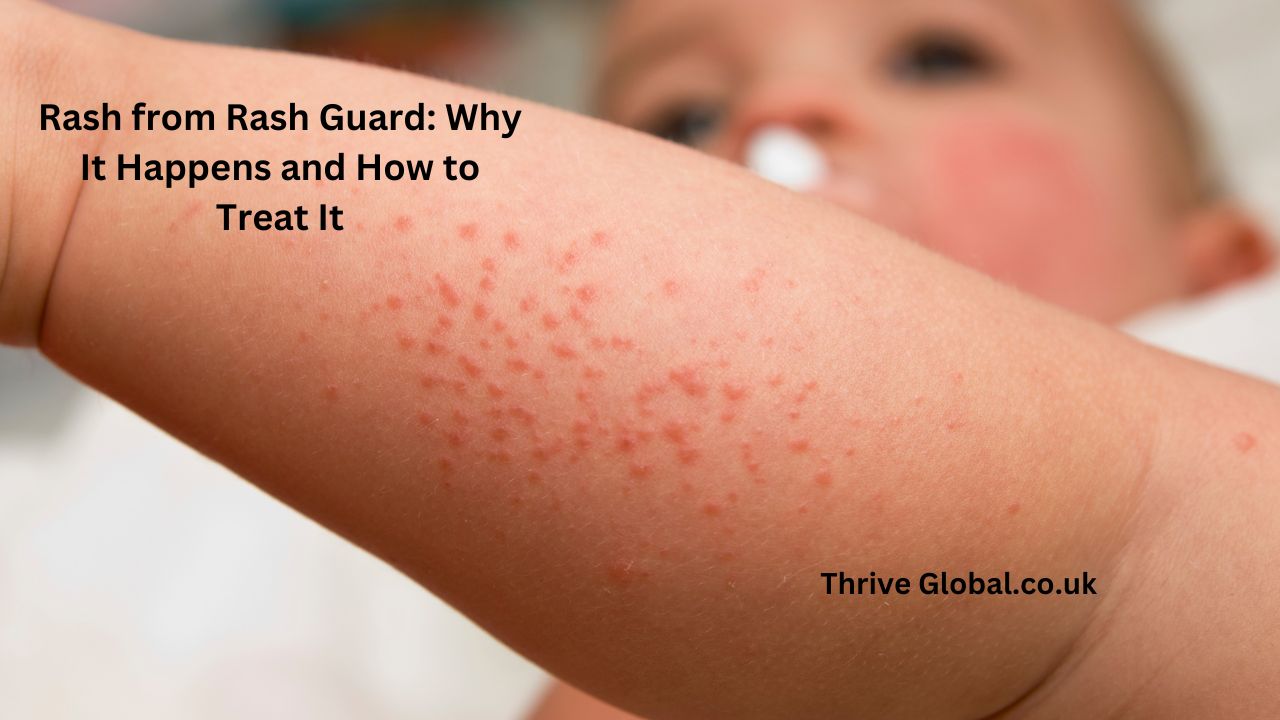If you’ve ever experienced Rash from Rash Guard, you’re not alone. Rash guards, designed to protect your skin from sun and abrasions during water sports, can sometimes cause skin irritation. This irritation, often manifesting as a red, itchy rash, can be due to several factors.
The tight fit, which is essential for reducing drag in the water, can cause friction against your skin, especially in sensitive areas. Additionally, the materials used in rash guards, like spandex or nylon, can trap sweat and moisture, creating an environment where bacteria and fungi thrive, further irritating the skin.
Treating a rash from a rash guard involves a few simple steps. First, make sure to thoroughly clean the affected area with gentle soap and water to remove any irritants. Applying an over-the-counter hydrocortisone cream can help reduce inflammation and itching. It’s also important to keep the area dry and avoid wearing the rash guard until the rash heals completely.
Why Do Rashes Occur from Wearing Rash Guards?
Friction and Irritation
One of the most common reasons why people develop rashes from wearing rash guards is friction and irritation. The snug fit of a rash guard combined with repetitive movements during activities such as swimming, surfing, or other water sports can lead to friction against the skin, causing irritation and inflammation.
Fabric Sensitivities
Another factor that can contribute to rashes from rash guards is fabric sensitivities. While most rash guards are made from synthetic materials such as polyester or spandex, some individuals may have sensitivities or allergies to certain fabrics. This can manifest as itching, redness, or a rash when the skin comes into contact with the fabric of the rash guard.
Moisture and Sweat Buildup
Moisture and sweat buildup underneath a rash guard can create a warm, humid environment that is conducive to the growth of bacteria and fungi. This can lead to skin infections such as folliculitis or fungal infections, which can cause itching, redness, and irritation.
How to Treat a Rash from a Rash Guard
1. Wash the Affected Area
If you develop a rash from wearing a rash guard, the first step is to gently wash the affected area with mild soap and lukewarm water. This can help remove any irritants or bacteria that may be contributing to the rash.
2. Apply a Cold Compress
Applying a cold compress or cool, damp cloth to the rash can help soothe itching and reduce inflammation. Simply place the compress on the affected area for 10-15 minutes at a time, several times a day as needed.
3. Use Over-the-Counter Remedies
Over-the-counter remedies such as hydrocortisone cream or calamine lotion can help alleviate itching and inflammation associated with rashes. Apply a thin layer of the cream or lotion to the affected area according to the manufacturer’s instructions.
4. Keep the Skin Dry and Clean
To prevent further irritation and promote healing, it’s essential to keep the skin dry and clean. Avoid wearing tight clothing or abrasive fabrics that may exacerbate the rash, and shower promptly after swimming or engaging in activities that cause sweating.
5. Seek Medical Attention if Necessary
If the rash persists or worsens despite home treatment, or if you experience symptoms such as fever, pus-filled blisters, or spreading redness, it’s important to seek medical attention promptly. A healthcare professional can provide a proper diagnosis and recommend appropriate treatment options.
Preventing Rashes from Rash Guards
Choose the Right Size and Fit
Ensuring that your rash guard fits comfortably and provides adequate coverage without being too tight can help prevent friction and irritation against the skin.
Opt for Moisture-Wicking Fabric
Choosing a rash guard made from moisture-wicking fabric can help keep the skin dry and reduce the risk of moisture and sweat buildup, which can contribute to skin irritation and rashes.
Wear a Rash Guard with UPF Protection
Look for rash guards that offer UPF (ultraviolet protection factor) protection to shield the skin from harmful UV rays. This can help prevent sunburns and reduce the risk of skin irritation caused by prolonged sun exposure.
Also Read: BlinkRx: Fast, Easy, and Reliable Pharmacy Services Online
Take Breaks and Allow the Skin to Breathe
If engaging in activities that require wearing a rash guard for an extended period, such as surfing or snorkeling, be sure to take breaks and allow the skin to breathe. Removing the rash guard periodically can help reduce friction and minimize the risk of developing a rash.
Practice Proper Skin Care
Maintaining good skin hygiene and moisturizing regularly can help keep the skin healthy and resilient, reducing the likelihood of developing rashes or other skin problems.
Conclusion
While rash guards offer valuable protection against sun exposure and skin abrasions, some individuals may experience skin irritation or rashes from wearing them. By understanding the factors that contribute to rashes from rash guards and implementing effective treatment and prevention strategies, you can enjoy the benefits of wearing a rash guard while minimizing the risk of skin irritation and discomfort.
Also Read: Streameast: The Best Website For Live Sports Streams
FAQs
1. Can wearing a rash guard cause a rash?
Yes, wearing a rashes guard can sometimes cause friction and irritation against the skin, leading to the development of a rash, especially if the rash guard is too tight or if the skin is sensitive to certain fabrics.
2. How long does it take for a rash from a rash guard to go away?
The duration of a rash from a rashes guard can vary depending on the severity and underlying cause of the rash. In most cases, rashes caused by friction or irritation typically resolve within a few days with proper treatment and care.
3. Should I continue wearing a rash guard if it causes a rash?
If wearing a rash guard causes a rash or discomfort, it’s advisable to discontinue wearing it until the rash resolves. You may also consider trying a different size or fabric to see if it alleviates the problem.
4. Can I prevent rashes from occurring while wearing a rash guard?
Yes, there are several steps you can take to prevent rashes from occurring while wearing a rash guard, such as choosing the right size and fit, opting for moisture-wicking fabric, wearing a rash guard with UPF protection, taking breaks to allow the skin to breathe, and practicing proper skin care.
5. When should I seek medical attention for a rash from a rash guard?
If the rash persists or worsens despite home treatment, or if you experience symptoms such as fever, pus-filled blisters, or spreading redness, it’s important to seek medical attention promptly for a proper diagnosis and treatment plan.









